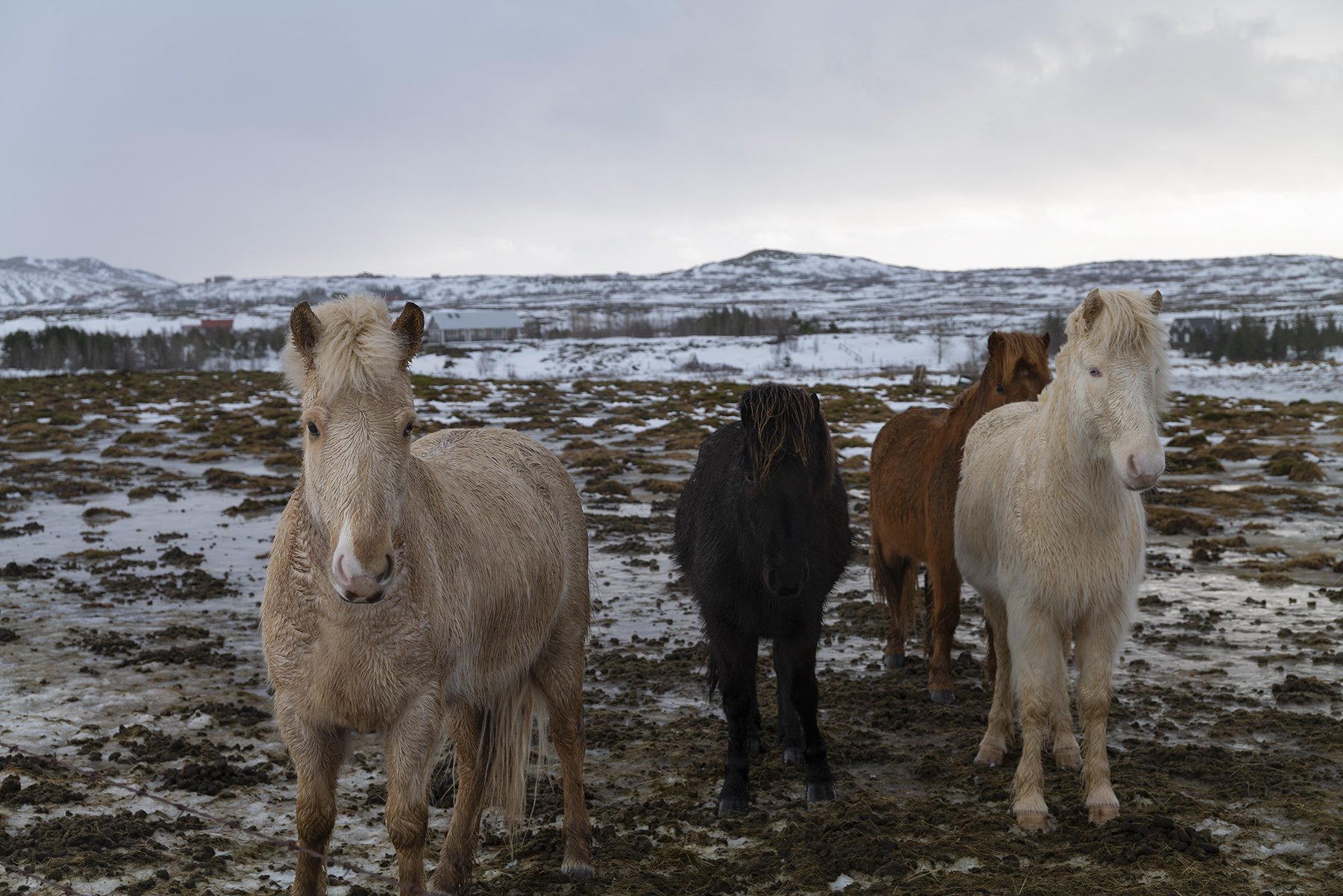Iceland
In this journal, I document my photos, videos and experiences when travelling in rugged and inspiring Iceland.
With frozen roads, zero visibility from snowstorms, gale-force winds and unpredictable sea states, this is not a conventional holiday destination. Rather it is a destination that offers lifelong memories and experiences.
There’s a good reason why Iceland can be environmentally demanding.
The country sits South of the Arctic circle, around 190 miles from Greenland. Close enough to Greenland that it has been known for Polar Bears to cross on icebergs.
Amazingly, this relatively small country is split by two tectonic plates, North America and Eurasian.
Iceland is a compilation of volcanos, barren lava fields, acidic hot springs, warm and inviting geo thermal pools that you can swim in… and lots of horses. Icelandic people love their horses.
The ‘Icelandic’ is the original horse of the Vikings, taken to Iceland over a thousand years ago and purebred ever since.
Natural selection has played an important role in the ‘Icelandic’, evolving into one of the world’s most resilient breeds. The harsh Icelandic climate eliminated many horses through exposure and malnourishment. In the 1780s, much of the breed was wiped out in the aftermath of a volcanic eruption.
If an Icelandic horse is taken abroad, it can never be returned to its native country.
Vík’s black coastline
Vík í Mýrdal is a remote seafront village that wouldn’t look out of place as a set in the film 50 Days of Night. Local beaches are renowned as the most dangerous in the country. During our visit, we faced Vík’s wrath powered by savage winter conditions. Like much of Iceland, appreciation and observation should be met with care.
The beach has been formed by boiling hot lava, from a currently dormant volcano floating across the beach, then cooling and solidifying when hitting the cold water.
Reykjavík is the capital of Iceland and like most capitals, it encapsulates the history and culture of the country well. However, this is a city that can offer something special.
Faxaflói Bay, which surrounds Reykjavík is home to an array of wildlife including puffins, white-beaked dolphins, minke and humpback whales.
During our Reykjavík visit, we arranged to go whale watching, which did not disappoint (seatrips.is). The skipper was knowledgeable and managed to find a humpback whale and a large pod of dolphins. We were fortunate to see a humpback in Reykjavík during the winter, as the whales often migrate to warmer waters.
Iceland is known for its volcanos, hot springs, mud pools, geysers and geothermal seawater pools. What bubbles away under your feet is what truly makes this country fascinating.
Named after an angry female ghost, Gudrun, whose spirit was trapped in the hot springs by a priest 400 years ago. The steamy area has an eerie atmosphere and an incredible sulfur vapour.
Flying a drone around these beautiful yet dangerous mud pools and steam vents was a thrill. High wind speeds and vast areas of boiling hot landscape, doesn’t allow room for error or emergency landings.
With the average temperature of the earth's surface somewhere between 80°C – 100°C, landing the drone anywhere other than the provided boardwalk; keeping you off the acidic ground would be less than ideal… Yet the risk was (on this occasion) hugely paid off by the reward.
The colours, textures and detail in this landscape make for incredible images, which can only be fully appreciated from directly above.
My closing sentiment with Iceland is simple and honestly, more of a rhetorical question.
Why have I not visited this beautiful and fascinating country sooner?
And, when (not if) when will I be returning?
ALL WORDS, VIDEOS & PHOTOS ARE COPYRIGHT TO MATT ANKERS 2023













